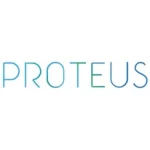I heard once that if you were to pass yourself in the street, you wouldn’t recognise your own face. Is that true? It might have been true back in the 15th century when the only way to have any idea of what you looked like was a mirror or to sit for a very expensive (and slightly snooty) portrait. We see our own faces a lot more now. I’m using the front camera of my smartphone to check if I have food in my teeth while on the bus. What a time to be alive!
Social media is another way which allows us to really study our own face. Now, sometimes this is not the best use of social media and looking turns into analysing and critiquing. But if the balance is right, and we find peace in ourselves then we can really look at our face, and see without being critical. Lines settled on our face from laughing loudly, the bump in your nose from your ancestors, and the scar on your eyebrow from a playground fall as a child.
However, there was a time when taking a selfie would take days to finish and would be so expensive that only the royals could afford one… The Tudors loved a portrait. You can see in many of the royal portraits of the era, that the fashion was a large forehead and plump, rosy cheeks. This wasn’t always the natural appearance and was requested to be added to their portrait. In the 17th century, Oliver Cromwell was to sit for painter Sir Peter Lely. From this encounter came the famous saying “warts and all”. Cromwell wanted to be captured as he was, without the early version of airbrushing.
In the 15th century, portrait artists were the modern-day celebrity and the saying goes ‘every painter paints himself’. Artists would leave a secret signature in their portraits, one which wasn’t meant to be there and was difficult to spot. This could be script of their name or even a portrait of themselves within the artwork. The ego of this is fantastic. This artist’s self-importance became prominent in the Renaissance era, across Europe. Italian artists would include themselves on the right side of the portrait with their eyes locked on the viewer of the painting. They were not hiding and they wanted to be seen, as they saw the viewer. Some were not so straightforward. Northern Renaissance artists would display personal flare and technique when including their image in paintings. They would have to be found, often in a reflection as a distorted image.
One of my absolute favourite examples of the artist’s ego is ‘The Arnolfini Portrait’ by Jan van Eyck (1434). The wedding portrait holds copious amounts of symbolism, information and hidden clues about the figures and the artist. There is so much in this painting which subtly expresses wealth. On the right, we see a bed with red drapes, which was commonly found in the living room of a wealthy 15th-century home. On the left, there are oranges on the window sill which in Northern Europe were very difficult to get and highly expensive. In terms of the hidden artist in this painting, there are two possibilities of Jan van Eyck, the first quite clear. The script above the mirror in the centre of the couple and centre of the painting is done in extravagant calligraphy and written in Latin, it reads “Jan van Eyck has been here”. Quite an obvious signature. The second and more questionable signature is also surrounding the mirror, Jan van Eyck clearly wanted to remain central for this. In the mirror, there are two figures which are slightly distorted because of it’s circular shape. The are two arguments for these figures: number one is that they are people entering the room and greeting the newlyweds, which is why the male figure might have his hand raised. Number two (which is my preferred belief) is that one of the figures is Jan van Eyck and a member of the entourage. It’s as if van Eyck is looking at his work from the perspective of the viewer and admiring his skill and talent. Not only has he basically written “Eyck wos ‘ere” but he has also shown himself admiring his own signature! It is ego on top of ego, while the ego looks at it and thinks about how great they are. Fabulous.
Of course, this is not such a trend now, the artist’s ego has somewhat diminished and if we chose to include our face in a painting then it will be classed as a self-portrait. How much I would love to see Damien Hurst try to include his own face in one of his works, I just can’t put into words… but alas. Today, many people attend classes, clubs and groups just for creating self-portraits as it has been suggested to improve artistic skill, concentration and mental health. With no mention of ego.
Proteus are hosting a week-long exhibition and workshops which include self-portraits, ceramics, embossing and so many other. 7 Artists exhibition is running at Creation Space from Saturday 20th August till Monday 29th August. We hope you can come along to see the works and even attend the workshops. For more info and booking see our ‘what’s on’ section of our website.
7 Artists Exhibition and Workshops
Jan van Eych ‘The Arnolfini Portrait’
By Isobel Smith
Our Brochure
Sign up to our mailing list
for regular Creation Space news and updates.


